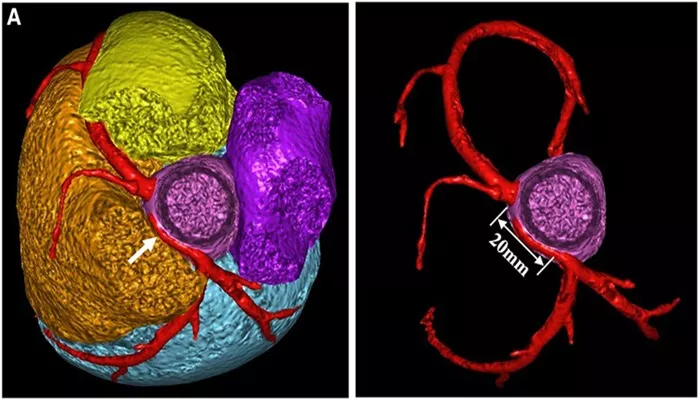Sinus arrhythmia is a common condition characterized by variations in heart rate that occur with breathing. It is often seen in healthy individuals, particularly in younger populations. Understanding how to read an electrocardiogram (ECG) for sinus arrhythmia is essential for healthcare providers. This article will guide you through the key features of sinus arrhythmia on an ECG and how to interpret these findings.
What Is Sinus Arrhythmia?
Sinus arrhythmia is a rhythm disorder that originates from the sinoatrial (SA) node, the heart’s natural pacemaker. It is defined by a variation in heart rate that corresponds with the respiratory cycle. During inhalation, the heart rate typically increases, and during exhalation, it decreases. This phenomenon is a normal response of the autonomic nervous system.
Types of Sinus Arrhythmia
Respiratory Sinus Arrhythmia: This is the most common type and is related to the breathing cycle.
Non-Respiratory Sinus Arrhythmia: This may occur due to other factors, such as anxiety, fever, or certain medications.
Key Characteristics of Sinus Arrhythmia on ECG
When reading an ECG for sinus arrhythmia, several key characteristics must be identified:
1. Heart Rate
In sinus arrhythmia, the heart rate typically ranges from 60 to 100 beats per minute (bpm). However, the rate may vary due to the influence of respiration.
SEE ALSO: Can Lithium Cause Arrhythmias?
2. P Waves
P waves represent atrial depolarization. In sinus arrhythmia, the P waves are present and consistent in shape. They should appear before each QRS complex, indicating that the impulse originates from the SA node.
3. PR Interval
The PR interval is the time from the onset of the P wave to the start of the QRS complex. In sinus arrhythmia, the PR interval remains constant, typically ranging from 120 to 200 milliseconds. Variations in heart rate do not affect the duration of the PR interval.
4. QRS Complex
The QRS complex represents ventricular depolarization. In sinus arrhythmia, the QRS duration is usually normal, ranging from 60 to 100 milliseconds. Each QRS complex should follow a P wave.
5. Rhythm Regularity
One of the defining features of sinus arrhythmia is its irregular rhythm. The intervals between successive R-R intervals (the peaks of the QRS complexes) will vary. This irregularity is often more pronounced during the respiratory cycle.
6. Variability with Breathing
As previously mentioned, sinus arrhythmia shows a clear relationship with the respiratory cycle. Heart rates increase with inhalation and decrease with exhalation. This variability is an important indicator of the condition.
Steps to Read An ECG for Sinus Arrhythmia
Reading an ECG can be simplified into a systematic approach. Follow these steps:
Step 1: Assess the Heart Rate
Count the number of beats within a 6-second strip and multiply by 10 to estimate the bpm.
Look for variability in heart rate that correlates with breathing.
Step 2: Identify P Waves
Look for P waves before each QRS complex.
Ensure the P waves are uniform in shape.
Step 3: Measure the PR Interval
Use calipers or a ruler to measure the distance from the start of the P wave to the start of the QRS complex.
Check that the PR interval is consistent throughout the ECG.
Step 4: Evaluate the QRS Complex
Confirm the duration of the QRS complex.
Look for a normal morphology, indicating effective ventricular depolarization.
Step 5: Check for Rhythm Regularity
Measure the R-R intervals to see if they vary.
Document the irregularity, noting that it should correlate with the respiratory cycle.
Step 6: Document Your Findings
Record your observations regarding heart rate, P waves, PR interval, QRS duration, and rhythm regularity.
Include any clinical context or patient history relevant to the arrhythmia.
Clinical Significance of Sinus Arrhythmia
In most cases, sinus arrhythmia is a benign condition and does not require treatment. However, it is essential to differentiate it from more serious arrhythmias, such as atrial fibrillation or other supraventricular arrhythmias.
When to be Concerned
Although sinus arrhythmia is often harmless, certain situations may warrant further investigation:
If the patient has symptoms such as palpitations, dizziness, or syncope.
If there is a sudden onset of arrhythmia in an older patient or those with heart disease.
In these cases, further evaluation, including a comprehensive history and additional testing, may be necessary.
Conclusion
Reading an ECG for sinus arrhythmia involves understanding its unique characteristics, including heart rate variability, consistent P waves, and a stable PR interval. While sinus arrhythmia is generally considered normal, awareness of its features is crucial for healthcare providers. By following the systematic approach outlined above, you can effectively identify sinus arrhythmia on an ECG and distinguish it from other more serious conditions.
Related topics:


